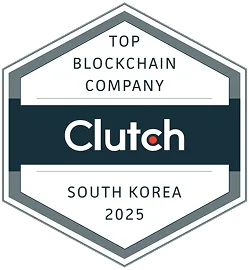How to Design Sustainable Tokenomics Model

What is Tokenomics?
The word ‘tokenomics’ is a combination of words ‘token’ and ‘economics.’ A token is a digital asset issued by a blockchain-based platform. Unlike cryptocurrencies such as Bitcoin or Ethereum, which serve as mediums of exchange or stores of value, tokens often have specific use cases within their respective ecosystems.
So tokenomics is the economic principles and mechanisms that govern the issuance, distribution, and utilization of tokens within a blockchain ecosystem. At its core, tokenomics development is all about creating a set of rules and incentives designed to generate value, get people involved in the network, and drive growth in the ecosystem.
Importance of Well-Designed Tokenomics
A well-designed tokenomics model carefully considers a wide range of factors to create a balanced and effective ecosystem. In contrast, a poorly designed tokenomics model may lack clear objectives, have inequitable distribution mechanisms, or fail to align with the needs of users and stakeholders. This can result in a lack of trust, reduced participation, and ultimately, the failure to achieve project goals.
In the fast-changing world of blockchain technology, creating well-designed tokenomics is like building a skyscraper on a solid foundation. Just as a strong base supports a tall building, solid tokenomics is what makes successful blockchain projects possible.
Key Components of Well-Designed Tokenomics
Well-designed tokenomics encompasses several key components, including:
Token Utility
Token utility lies at the heart of tokenomics development, defining the practical applications and functionalities of the token within the ecosystem. Whether facilitating transactions or accessing platform features, token utility shapes the perceived value and demand for the token among users and investors alike. A well-defined token utility ensures that the token serves a tangible purpose, driving adoption and usage within the ecosystem.
Token Distribution
Token distribution refers to the process of allocating and spreading tokens within a blockchain ecosystem. It is a critical aspect of tokenomics development as it determines how tokens are initially distributed among stakeholders and how they are subsequently circulated within the network. Whether through initial coin offerings (ICOs), token sales, airdrops, or decentralized exchanges (DEXs), transparent and equitable token distribution fosters community trust and inclusivity.
Token Supply
Token supply refers to the total number of tokens in circulation within a blockchain ecosystem. It plays a pivotal role in tokenomics design as it directly impacts token value and economic dynamics. A carefully managed token supply ensures scarcity, prevents dilution, and incentivizes early adoption and network participation. Balancing token supply is crucial for fostering investor confidence, promoting long-term value appreciation, and sustaining ecosystem growth. Additionally, managing token supply effectively contributes to network security, resilience, and overall project success.
Vesting Schedules and Lock-up Periods
Vesting schedules and lock-up periods determine when tokens are released and distributed over time. This aligns incentives and prevents people from selling or dumping tokens too early. By setting up a gradual release schedule or lock-up period for token allocations, projects encourage long-term commitment and discourage people from making investments based on speculation. Vesting schedules make sure that tokens are distributed gradually, rewarding people who stick around and contribute to the ecosystem.
Governance Structures
Effective governance structures empower stakeholders to participate in decision-making processes, ensuring the sustainable growth and evolution of the ecosystem. Whether through on-chain voting mechanisms, decentralized autonomous organizations (DAOs), or community governance forums, robust governance frameworks promote transparency, accountability, and consensus-driven decision-making. By fostering community involvement and aligning incentives, governance structures enable stakeholders to steer the direction of the project and adapt to changing market dynamics.
Read more in our thorough guide Tokenomics Decoded: Key Components Explained!
Common Mistakes in Tokenomics Design
Despite its importance, tokenomics design is fraught with potential pitfalls and challenges. Even the best projects can get off track if they don't pay attention to the details. Let’s take a look at some common mistakes in tokenomics design and strategies to avoid them.
Lack of Clear Objectives and Use Cases
One of the most common mistakes in tokenomics design is a lack of clear objectives and use cases for the token. Without a defined purpose or utility, tokens risk becoming speculative assets with little intrinsic value. To avoid this pitfall, it's essential to clearly define the problem your project aims to solve, identify the target audience, and determine how the token will add value to the ecosystem. Conduct thorough market research to understand user needs and preferences, and design token utility that aligns with these requirements.
Overcomplicated Tokenomics Structures
Another common mistake is the tendency to overcomplicate tokenomics structures, leading to confusion and inefficiency within the ecosystem. Complex tokenomics models with numerous parameters, mechanisms, and incentives can be difficult to understand and manage, hindering adoption and participation. Instead, strive for simplicity and clarity in your tokenomics design, focusing on essential functionalities and incentives that drive user engagement and ecosystem growth. Keep the tokenomics model transparent and easy to understand for all stakeholders, from developers to end-users.
Inequitable Token Distribution
Unequal or unfair token distribution is a significant concern in tokenomics design, as it can lead to centralization, market manipulation, and community backlash. Avoid concentrating token ownership in the hands of a few stakeholders, such as founders or early investors, as this can undermine decentralization and trust within the ecosystem. Implement transparent and inclusive token distribution mechanisms to ensure broad participation and equitable access to tokens among all stakeholders.
Lack of Flexibility and Adaptability
Tokenomics design is not a one-time process but an ongoing iterative journey that requires flexibility and adaptability to changing market conditions and user needs. Failing to anticipate future developments or account for unforeseen challenges can lead to obsolete tokenomics models that fail to meet evolving demands. Build flexibility into your tokenomics design by implementing upgradeable smart contracts, governance mechanisms, and economic incentives that can be adjusted or fine-tuned as needed. Continuously monitor and evaluate the effectiveness of your tokenomics model, gathering feedback from the community and iterating on your design to address emerging challenges and optimize for success.
Unrealistic Promises
If you make promises about the value or returns of your token that you can't keep, it'll hurt your credibility and make it harder for investors and users to trust you. Don't go overboard with the hype. Stick to the facts and avoid making claims about token value appreciation or market performance that you can't back up. Instead, focus on delivering real value and building a sustainable ecosystem that will help your project grow and be adopted over time.
Ignoring Community Engagement
Neglecting community engagement is a common mistake in tokenomics development that can hinder adoption and growth within the ecosystem. Communities play a vital role in the success of every blockchain project development, providing feedback, support, and advocacy for the project.
By avoiding common mistakes, you can create a robust and effective tokenomics model that will help your project succeed. Embrace transparency, simplicity, and inclusivity in your tokenomics design, prioritizing user needs to build a thriving and sustainable blockchain ecosystem.
How To Create Tokenomics That Drives Your Project Forward
Creating tokenomics to drive your project forward requires careful planning, strategic decision-making, and a deep understanding of your project's goals and target audience. Here's a step-by-step guide to help you navigate the process:
1. Define Your Project Goals
Start by laying out the big picture of what you're trying to achieve with your project. Make sure you're clear about what problem your project is trying to solve and what makes it special. Think about how blockchain technology and tokenomics can help you achieve your project goals and drive innovation in your industry.
2. Research Your Market and Audience
Conduct extensive market research to understand the needs, preferences, and pain points of your target audience. Analyze market trends, competitor strategies, and user behavior to identify opportunities for differentiation and value creation. Use insights from your research to inform your tokenomics design and tailor it to the needs of your audience.
3. Select the Right Blockchain Platform
Choose a blockchain platform that aligns with your project requirements, technical capabilities, and long-term vision. Evaluate factors such as scalability, security, decentralization, developer support, and community adoption when selecting a blockchain for your project. Consider well-known platforms like Ethereum, BNB Chain, or Polkadot that offer robust infrastructure and vibrant ecosystems for tokenomics development.
4. Choose the Right Token Standard
Select a token standard that best suits your project's use case and requirements. Decide whether you need fungible tokens (e.g., ERC-20, TRC-20, BRC-20) for currency or utility purposes, non-fungible tokens (e.g., ERC-721) for unique digital assets, or a combination of both. Consider emerging standards that offer versatile solutions for tokenomics design and development.
5. Design Token Utility
Define the utility and functionality of your token within the ecosystem. Determine how token holders can use the token to access platform features, obtain discounts, participate in governance, or receive rewards. Design a token utility that aligns with your project goals, incentivizes desired behaviors, and enhances user engagement and retention.
6. Balance Token Supply Dynamics
Determine the total token supply and issuance schedule based on market demand, ecosystem growth projections, and token utility requirements. Choose a supply model (e.g., fixed supply, inflationary, deflationary) that maintains scarcity, price stability, and long-term value appreciation while incentivizing network participation. Implement mechanisms such as token burns or token buybacks to manage token supply and optimize economic incentives.
7. Plan Token Distribution
Develop a comprehensive token distribution strategy that ensures fairness, transparency, and broad participation within the ecosystem. Define how tokens will be allocated among founders, investors, developers, and community members, taking into account factors such as token sale events, airdrops, and token allocation for ecosystem development. Implement vesting schedules and lock-up periods to incentivize long-term commitment and discourage speculative behavior.
8. Establish Governance Structures
Design robust governance mechanisms that enable stakeholders to participate in decision-making processes and shape the direction of the project. Define voting rights, proposal submission procedures, and governance parameters to ensure transparency, accountability, and consensus-driven governance. Implement on-chain governance solutions or decentralized autonomous organizations (DAOs) to facilitate community involvement and empower token holders to govern the ecosystem effectively.
9. Integrate Economic Incentives
Incorporate economic incentives, such as staking rewards, yield farming, and others, to incentivize token holders to contribute value to the ecosystem. Design incentive mechanisms that promote user engagement, network security, and ecosystem growth while aligning with your project's objectives. Implement gamification mechanics, referral programs, or loyalty rewards to encourage active participation and drive adoption of your token.
10. Iterate and Adapt
Continuously monitor and evaluate the effectiveness of your tokenomics model. Gather feedback from the community, analyze market trends, and iterate on your tokenomics design to address emerging challenges and optimize for success. Remain flexible and adaptable to evolving market conditions, regulatory requirements, and technological advancements. Iterate on your tokenomics model iteratively based on real-world data and user feedback to ensure its effectiveness and relevance over time.
By following these comprehensive steps and leveraging best practices in tokenomics design and development, you can create a robust and effective tokenomics model that drives your project forward, fosters ecosystem growth, and delivers value to your stakeholders.
Successful Tokenomics Examples
By examining successful examples of tokenomics design, such as tokenomics of Bitcoin, Ethereum, and Polygon, you can gain valuable insights into the key principles and mechanisms that drive their tokens.
Bitcoin Tokenomics
Bitcoin, the first cryptocurrency, operates on a deflationary economic model with a fixed maximum supply of 21 million coins. Miners are rewarded with newly minted Bitcoin for validating transactions and securing the network. However, this reward is halved approximately every four years in a process known as the halving. The last Bitcoin halving took place on April 19, 2024. The halving ensures that the rate of Bitcoin issuance decreases over time until the maximum supply is reached, which is projected to occur in 2142. This scarcity model, coupled with increasing demand, has contributed to Bitcoin's status as a store of value and digital gold.
Ethereum Tokenomics
Ethereum operates on a different tokenomics model compared to Bitcoin. Ethereum's native currency, Ether (ETH), has a dynamic issuance rate that adjusts based on network activity. Unlike Bitcoin, Ethereum initially distributed ETH through a public sale, with a maximum supply of 18 million ETH per year. However, Ethereum does not have a fixed maximum supply, allowing flexibility in its monetary policy. ETH serves as the primary means of payment for transactions and smart contracts executed on the Ethereum network. ETH is also can be used for staking and governance, further enhancing its utility within the ecosystem.
Polygon Tokenomics
Polygon, a Layer 2 scaling solution for Ethereum, operates on a unique tokenomics model tailored to its specific ecosystem. The native token of Polygon, MATIC, was rebranded to POL in 2023. POL serves as the major tool for coordination and incentivization within the Polygon ecosystem. POL has multi-fold utility: validator staking, validator rewards and governance. Validators in the Polygon network are required to stake POL to join the validator pool and secure the network. Protocol rewards incentivize validators, ensuring a level playing field for the entire validator pool. Additionally, validators can earn additional incentives by validating individual Polygon chains. The initial supply of POL is 10 billion tokens, with the entirety dedicated to migration from MATIC to POL, emphasizing continuity and community support.
Successful tokenomics models are characterized by a combination of scarcity, utility, and decentralization. Bitcoin's deflationary model and limited supply have established it as a digital store of value, while Ethereum's dynamic issuance rate and versatile utility position it as a leading smart contract platform. Polygon's unique tokenomics model, tailored to its Layer 2 scaling solution, emphasizes coordination and incentivization within its ecosystem. By understanding and applying the principles underlying these successful examples, blockchain projects can design tokenomics models that drive adoption, innovation, and long-term sustainability.
Why Partnering with a Blockchain Development Company is Crucial
Tokenomics design plays a pivotal role in driving adoption, incentivizing participation, and fostering sustainable growth. While the concept of tokenomics may seem straightforward, its execution requires a deep understanding of many technical and market aspects. This is where partnering with a blockchain development company can make all the difference.
The Complexity of Tokenomics Development
Designing and implementing tokenomics involves a myriad of considerations, ranging from token distribution and supply dynamics to utility and governance structures. Crafting a robust tokenomics model requires expertise in blockchain development, economics, game theory, and compliance. Moreover, the rapidly evolving nature of the blockchain space necessitates a dynamic and adaptive approach to tokenomics design. Attempting to navigate this complexity alone can be daunting and fraught with pitfalls.
How Experts Can Help
Comprehensive Understanding: A reputable blockchain development company, like Rock’n’Block, brings a wealth of experience and expertise to the table. Their team of seasoned professionals understands the intricacies of blockchain technology and can provide valuable insights into tokenomics design and implementation. By leveraging their knowledge, you can ensure that your tokenomics model aligns with your project goals and effectively addresses the needs of your target audience.
Expertise in Token Development: An expert blockchain development company brings extensive experience in token development. Their developers have successfully designed and implemented numerous tokenomics models across a diverse range of projects. By leveraging their expertise, you can benefit from best practices, innovative strategies, and lessons learned from past implementations.
Tailored Solutions: Every blockchain project is unique, with its own set of challenges and requirements. A skilled development team can work closely with you to craft a tokenomics model that is tailored to your specific use case and objectives. Whether you're launching a new cryptocurrency, tokenizing assets, or embarking on decentralized application development, experts can help you create tokenomics that maximize value creation and user engagement.
Technical Expertise: Implementing tokenomics involves smart contracts development, deploying blockchain protocols, and integrating various components of the ecosystem. A proficient development team possesses the technical prowess to execute these tasks efficiently and securely. Whether you're building on Ethereum, BNB Chain, or a custom blockchain solution, experts can leverage their technical know-how to bring your tokenomics model to life.
Iterative Optimization: Tokenomics is not a static concept but a dynamic process that evolves over time. A reputable blockchain development company can help you continuously optimize your tokenomics model based on real-world data, user feedback, and market trends. By iteratively refining your tokenomics design, you can adapt to changing conditions, address emerging challenges, and capitalize on new opportunities.
Partnering with a blockchain development company is crucial for successful tokenomics development that drives your project forward. Experts can give you a full understanding of every aspect, come up with custom solutions, and make sure your tokenomics model is rock solid, effective, and sustainable. By working with a team of experts, you can make the most of blockchain technology and give your project a solid foundation for success in the ever-changing digital landscape.
We ❤️ Development
Follow us on social media to receive the hottest blockchain development updates
Twitter ⚡️Telegram⚡️LinkedIn⚡️Facebook













%201.webp)



